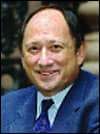by Elliott M. Moskowitz, DDS, MS

There are several reasons why the extraction/nonextraction debate remains unresolved. This issue is frequently discussed with too much rhetoric and orthodontic mythology instead of a careful examination of credible evidenced-based data and valid clinical interpretations that might be gained by meta-analysis of such data. Additionally, the reproducibility of excellent clinical outcomes by clinicians given similar clinical pretreatment findings is often ignored. Historically, Edward Angle, DDS, MD, arguably our greatest icon, formulated “guiding treatment principles” on belief and an erroneous marriage of science and art. The “Old Glory” skull with a full complement of 32 teeth (displaying both a bimaxillary dentoalveolar protrusion and definite, although mild, mandibular prognathism) could in no way produce the “ideal profile” espoused by Angle in his description of the profile and facial features of Apollo Belvedere.
Add to this that orthodontists know that treatment plans without the extraction of permanent teeth will undoubtedly be more favorably received by the parents of our young patients than treatment plans that entail the use of extractions as part of the overall treatment effort. Further obstacles to accepting premolar extractions as a potentially important part of the modern orthodontist’s treatment regimen is the fact that orthodontic treatment employing premolar or other extractions generally demand the highest degree of technical expertise.But perhaps the greatest problem is one that has been created by orthodontists themselves, and is very much related to some of the aforementioned factors. And that is simply that orthodontists make extraction/nonextraction decisions a goal, rather than a strategy.
It is disconcerting to see statements made in public lecture forums or in peer- and non-peer-reviewed publications that claim that, with the use of some of the new, commercially available, modern orthodontic gadgets, somehow orthodontic patients become immune to the biological realities of relapse. Overly optimistic expectations from gross overexpansion of the dental arches and significant violation of intercanine width increases now become justified as “fitting all the teeth” into some symmetrical arrangement, despite the fact that this type of strategy has resulted in some of the most horrendous orthodontic relapse. Clearly, there are numerous instances in which patients might very well benefit from the extraction of permanent teeth. Significant crowding and protrusion of teeth in which patients cannot close their lips comfortably or are dissatisfied with their overly full profiles, decompensating movements prior to orthognathic surgery, camouflage treatment of skeletal malocclusions (particularly Class II, but in some cases, Class III types as well) where orthognathic surgery is not considered an option, and significant intradental midline discrepancies, are some of the more obvious (but by no means exhaustive) reasons to consider extractions of permanent teeth.
It is my opinion that extraction strategies do not generically “dish in profiles.” Poorly selected cases for extraction or cases in which extraction mechanics have been poorly implemented (leading to loss of upper-incisor torque during treatment) can indeed cause dramatic and undesirable profile appearance. These factors are probably more closely related to clinician diagnostic acumen and technical skill than anything else. Additionally, the charge that extraction cases lead to a greater incidence of TMD problems has been systematically studied, and the conclusions overwhelmingly do not support such claims.1–3
On the other hand, the legitimate use of nonextraction therapies deserves consideration. Anthony Gianelly, DMD, PhD, MD, has shown that the window of sound nonextraction treatment (consistent with what is currently known of the relative boundaries of valid tooth movement during orthodontics) can be greatly increased via “E”-space preservation in the lower dental arch and nonextraction strategies (molar distalization) in the upper dental arch prior to the loss of the upper second primary molars and eruption of the upper second molars.
What is needed to end this debate? Adhering to established treatment goals based upon optimizing aesthetics, function, and stability would appear to be a giant step forward. Revisiting existing studies that have served as “road maps” for clinicians deciding upon the appropriateness of either nonextraction or extraction therapies, as well as designing new studies with modern clinical trial requirements, would be helpful. In an age of evidence-based dentistry, we are also compelled to ask (in the words of Lionel Sadowsky, DMD, BDS, MDent, Dip Orth), “Whose evidence is it and what is it based on?” Only then can we give orthodontic patients what they truly need on an individual basis rather than what we seem to know or believe. Only then can we claim that our treatment outcomes are predictable and based upon rational thought. Our patients do not deserve any less! Elliott M. Moskowitz, DDS, MSD, is a clinical professor in the department of orthodontics at the New York University College of Dentistry. He can be reached at [email protected].
References
1. Major P, Kamelchuk L, Nebbe B, Petrikowski G, Glover K. Condyle displacement associated with premolar extraction and nonextraction orthodontic treatment of Class I malocclusion. Am J Orthod Dentofacial Orthop. 1997;112(4):435-40.
2.Kim MR, Graber TM, Viana MA. Orthodontics and temporomandibular disorder: a meta-analysis. Am J Orthod Dentofacial Orthop. 2002;121(5):438-446.
3. Reynders RM. Orthodontics and temporomandibular disorders: a review of the literature (1966–1988). Am J Orthod Dentofacial Orthop. 1990;97(6):463-471.










